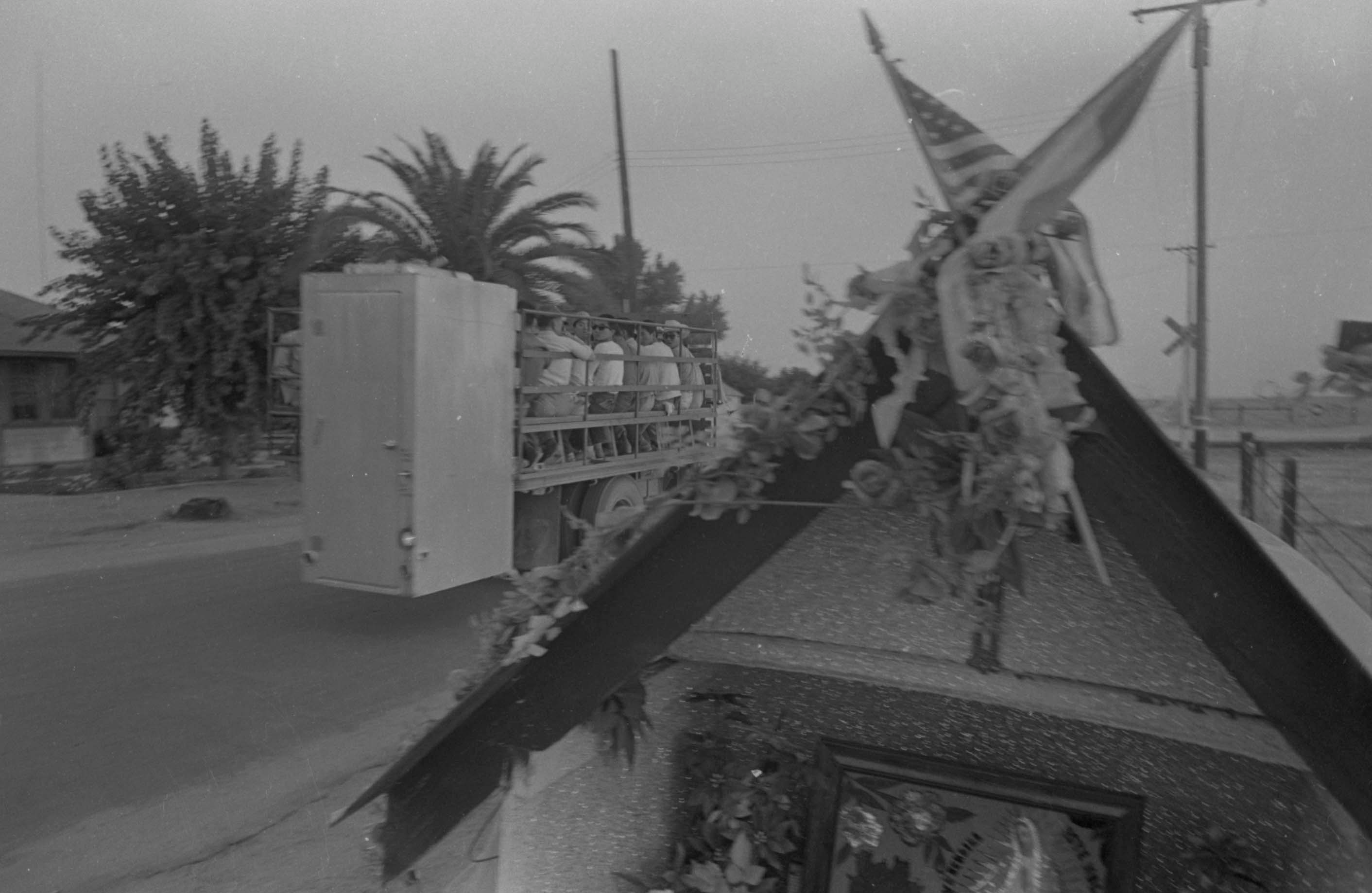Mobile Altar
Mobile Altar
Mobile shrine parked on the side of the road, Delano, 1966. Photo by John Kouns.
Altar chapel on station wagon, Delano, 1966. Photo by John Kouns.
Truck with workers driving by altar chapel on station wagon, Delano, 1966
A truck carrying workers passes by a station wagon that has been turned into a mobile chapel. It is parked in front of the DiGiorgio Corporation’s Sierra Vista Ranch in Delano. The trunk is open and showcases a picture of Our Lady of Guadalupe, as well as candles and flowers.
Chávez liked the idea and asked his brother Richard Chávez to convert Cesar’s old station wagon into a mobile chapel. This is how Chávez recalled the role of the mobile altar in an interview for the book by Marshall Ganz, Why David Sometimes Wins: “It was like a shrine with a picture of Our Lady of Guadalupe, some candles, and some flowers. We parked it across from the DiGiorgio gate where we started a vigil that lasted at least two months. People were there day and night.
“The next morning, we distributed a leaflet . . . inviting people to a prayer meeting at the DiGiorgio ranch and made the same announcement on the Spanish radio. People came by the hundreds. We brought loudspeakers and tried to get the people in the camp to come to the mass, but I don’t think more than 10 came out. Most of them were out at the fence looking and seeing a tremendous number of people. They were very impressed. There was also so much confusion; our guys found themselves talking to our members inside the camp for the first time in about three weeks. The next day . . . when the trucks brought the people from the fields to eat at the company mess hall, about eight women decided to come to where we had the vigil instead of going to the mess hall.
Altar chapel on station wagon, Delano, 1966. Photo by John Kouns.
“The supervisors got the trucks in the way to keep them from coming, but the women went way out through the vines and wouldn’t be stopped. They knelt down and prayed and then went back. That was the beginning. The same evening about 50 women came. The next evening, half the camp was out, and from then on, every single day, they were out there. Every day we had a mass, held a meeting, sang spirituals, and got them to sign authorization cards. It was a beautiful demonstration of the power of nonviolence.”
Tom & Ethel Bradley Center
California State University, Northridge
18111 Nordhoff Street, Northridge, CA 91330
Phone: (818) 677-1200 / Contact Us


